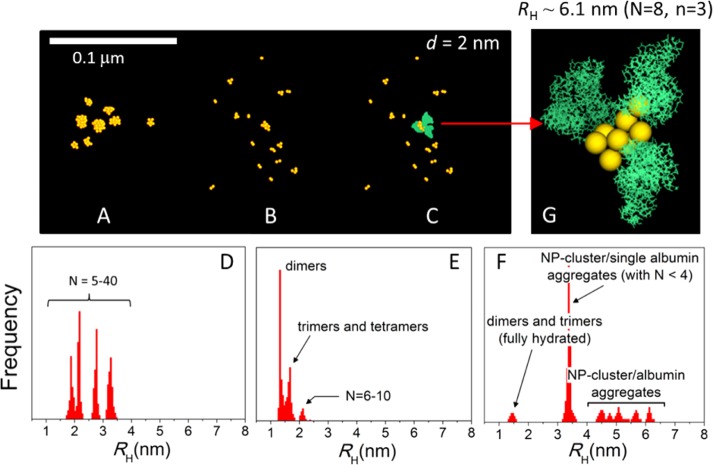Figure 7.
Effect of albumin on a concentrated monodisperse solution of nanoparticles with a diameter of 2 nm at 37 °C and pH 7. (A) NPs form compact clusters in pure water. (B) Clusters dissolve in the presence of albumin at physiological concentrations. (C) Disperse clusters are actually part of large, morphologically irregular cluster/albumin aggregates stabilized by the proteins that bind to the outer layer of the compact clusters. (D) Atomistic representation of a representative aggregate in the 2 nm NPs serum solution (snapshot from the simulation). Hydrodynamic radii of the NP clusters and aggregates are displayed in panels D–F (n and N are the number of albumin molecules and the number of NPs in the aggregates, respectively). At the IEP, the clusters are slightly larger and the aggregates are more compact, as expected from reduced electrostatic repulsion between proteins (cf. Figure 9).

